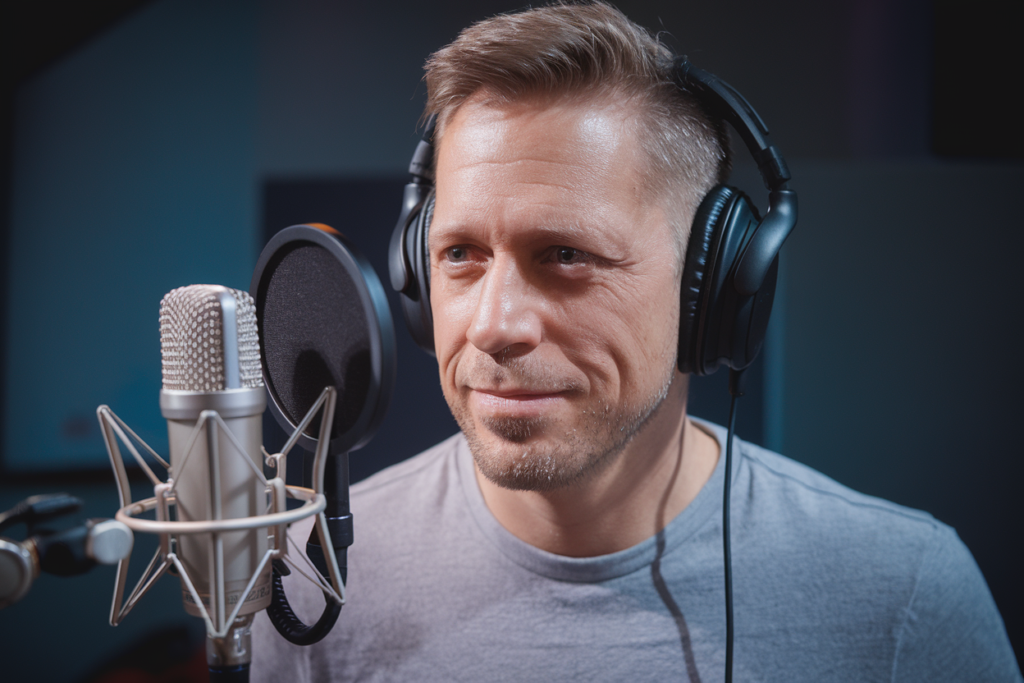Key Takeaways
- Diverse Dialect Groups: German dialects are categorized into major groups, including High German, Low German, Middle German, Franconian, Swabian, and Saxon, each reflecting unique regional characteristics.
- Influence on Standard German: High German serves as the foundation for Standard German; however, dialects contribute distinct vocabulary and pronunciation that enrich the language.
- Regional Variations: Each region in Germany showcases its own dialectal nuances shaped by local culture and history—Bavarian and Swabian in the South versus Plattdeutsch in the North.
- Communication Challenges: Vocabulary and pronunciation differences among dialects can lead to misunderstandings between speakers from different areas.
- Cultural Insights: Engaging with native speakers enhances understanding of local traditions and cultural heritage tied to their specific dialects.
- Historical Significance: The evolution of dialects illustrates how language shapes identity and community within various regions of Germany.
Ever wondered why the German language sounds so different across various regions? The dialects of German spoken in Germany are as diverse as the landscapes themselves. Each area boasts its own unique twist on vocabulary, pronunciation, and even grammar, making it a fascinating study for linguists and casual learners alike.
Overview of Dialects of German Spoken in Germany
German dialects showcase the rich linguistic diversity across Germany. Each region boasts unique vocabulary, pronunciation, and grammatical structures that contribute to its distinct identity.
Major Dialect Groups
- High German (Hochdeutsch)
- High German serves as the basis for Standard German.
- It’s prevalent in southern and central regions like Bavaria and Baden-Württemberg.
- Low German (Plattdeutsch)
- Low German is primarily spoken in northern Germany.
- It features unique phonetic characteristics and vocabulary different from High German.
- Middle German (Mitteldeutsch)
- Middle German is found in areas such as Hesse and Thuringia.
- This group includes notable dialects like Hessian and Thuringian, each with their own nuances.
- Franconian Dialects
- Franconian dialects are spoken in Franconia, a region within Bavaria.
- These dialects often exhibit influences from both High and Middle German.
- Swabian Dialect
- Swabian is known for its distinctive intonation and vocabulary.
- It’s mainly spoken in the Swabia region of Baden-Württemberg.
- Saxon Dialects
- The Saxon dialect exists predominantly in Saxony.
- This includes variations like Upper Saxon, which differs significantly from Standard German.
Characteristics of Regional Variations
- Vocabulary differences can lead to misunderstandings among speakers from various regions.
- Pronunciation varies greatly; for instance, some areas soften consonants while others emphasize them sharply.
- Grammar rules may differ slightly, influencing sentence structure or verb conjugation patterns.
Understanding these regional dialects enriches your appreciation for the language’s complexity. Engaging with native speakers provides valuable insights into local culture through their linguistic expressions. If you’re curious about a specific area’s dialect or want to learn more about how these variations shape communication styles within communities, exploring further can be rewarding.
Major Dialect Groups
Germany boasts a rich tapestry of dialects, each adding depth to the language. Understanding these major dialect groups enhances your appreciation for German culture and communication.
High German Dialects
High German dialects form the backbone of Standard German. Predominantly spoken in southern and central Germany, these dialects exhibit distinct pronunciation patterns and vocabulary. For instance, Bavarian is widely recognized for its unique sounds and terms that can challenge even native speakers from other regions. Other notable high dialects include Swabian, which has a melodic quality, and Alemannic, prevalent in parts of Baden-Württemberg. Each variation reflects local history and traditions, making them vital to understanding regional identities.
Low German Dialects
Low German dialects primarily thrive in northern Germany. These dialects differ significantly from their High German counterparts in both phonetics and vocabulary. Plattdeutsch is perhaps the most well-known among them, with roots tracing back centuries. It features softer sounds compared to standard forms of German and includes many words not found in High German dictionaries. The use of Low German can create an intimate connection between speakers but may also pose comprehension challenges for those unfamiliar with it.
Exploring these major dialect groups reveals not just linguistic diversity but also insights into the cultures that shape them. Engaging with native speakers offers an immersive experience that enriches your understanding of this fascinating language landscape.
Regional Variations
German dialects exhibit remarkable regional variations across Germany, each with unique characteristics shaped by local culture and history.
Southern Germany Dialects
Southern Germany is home to a rich tapestry of dialects. Bavarian, Swabian, and Alemannic are prominent here. Bavarians often use distinct vocabulary and unique pronunciations that can sound quite different from Standard German. Swabian speakers tend to have a softer tone, with specific phrases that may confuse outsiders. Alemannic covers areas in Baden-Württemberg and parts of Switzerland, showcasing its own quirky expressions and grammar rules.
Northern Germany Dialects
In northern Germany, Low German or Plattdeutsch stands out prominently. This dialect diverges significantly from High German in terms of phonetics and vocabulary. Many native speakers feel a strong connection to it, as it reflects their heritage and identity. The accent found in Hamburg also adds character to the region’s linguistic landscape, blending influences from various sources while maintaining distinct features.
Eastern Germany Dialects
Eastern regions like Saxony feature Saxon dialects known for their melodic intonation. These dialects include unique vowel sounds that might pose challenges for those unfamiliar with them. The Berlin dialect includes slang elements mixed into everyday speech, making it both fascinating and complex for learners trying to grasp the nuances of urban communication.
Western Germany Dialects
Western Germany showcases diverse dialects too. In the Rhineland area, Kölsch reflects both cultural pride and historical significance through its distinctive pronunciation patterns. On the other hand, Franconian varieties highlight regional uniqueness within Bavaria itself—somewhat similar yet distinctly different from neighboring areas.
Influence of Dialects on Standard German
Dialects significantly shape the evolution and understanding of Standard German. Each dialect contributes unique vocabulary, pronunciation, and grammatical nuances that enrich the language as a whole. High German dialects serve as the foundation for Standard German, influencing its phonetics and lexical choices. For instance, words from Bavarian or Swabian dialects often appear in everyday use within Standard German.
Dialectal variations affect not just how people communicate but also how they perceive each other culturally. Low German’s distinct phonetic characteristics can create both camaraderie among speakers and barriers for those unfamiliar with it. This divergence underlines the importance of regional identity intertwined with language.
Regional influences manifest distinctly across Germany’s landscape. In southern regions like Bavaria, local expressions and pronunciations seep into everyday conversation, even among speakers of Standard German. Similarly, Saxon dialects introduce melodic intonations that affect how people interpret tone in spoken communication.
Understanding these influences goes beyond mere linguistic interest; it opens doors to appreciating cultural heritage. Engaging with native speakers unveils layers of meaning tied to their local dialects—making conversations richer and more engaging.
Recognizing the dynamic relationship between dialects and Standard German enhances your appreciation for this diverse language landscape while fostering clearer communication with those from different regions.
Conclusion
Exploring the dialects of German spoken across Germany opens a window into the country’s rich linguistic and cultural diversity. Each dialect offers unique insights that reflect local customs and history, making your journey through German language learning even more rewarding.
By engaging with native speakers and immersing yourself in these regional variations, you’ll not only enhance your language skills but also gain a deeper appreciation for the nuances that shape communication in different areas. Understanding these dialects enriches your experience and helps bridge connections with others, fostering a greater sense of community and belonging within the broader tapestry of German culture.
Frequently Asked Questions
What are the main dialect groups in Germany?
The main dialect groups in Germany include High German, Low German, Middle German, Franconian, Swabian, and Saxon dialects. High German is prevalent in southern and central regions, while Low German is primarily spoken in the north. Each group has unique vocabulary and pronunciation that reflect local cultures.
How does High German differ from Low German?
High German serves as the basis for Standard German and features distinct pronunciation and vocabulary found mainly in southern Germany. In contrast, Low German (like Plattdeutsch) differs significantly in phonetics and may create comprehension challenges for those unfamiliar with it.
Why is studying regional dialects important?
Studying regional dialects enhances understanding of linguistic diversity and cultural heritage. It reveals how language shapes identities within communities while providing insights into local customs through engagement with native speakers.
What are some characteristics of Bavarian dialect?
Bavarian dialect is a prominent form of High German known for its unique intonation and vocabulary. It reflects the region’s culture and history while exhibiting variations across different areas within Bavaria.
Can understanding dialects help learn Standard German?
Yes! Understanding regional dialects can provide valuable context for learning Standard German. They contribute unique vocabulary and grammatical nuances that enrich overall language comprehension.
How do local expressions influence communication in Germany?
Local expressions shape everyday conversations by enhancing clarity and cultural relevance. Engaging with native speakers helps learners appreciate these nuances, fostering better communication across different regions of Germany.







